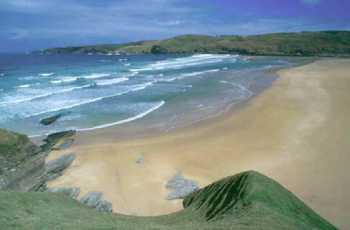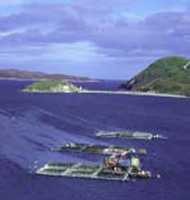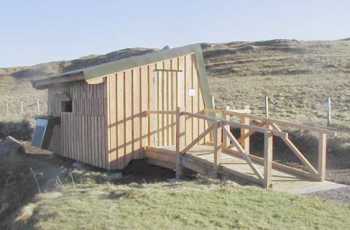 | Caithness.Org | Community | Business | Entertainment | Caithness... | Tourist Info | Site Map |
• Advertising • Chat Room • Contact Us • Kids Links • Links • Messageboard • News - Local & Scottish • News - UK & News Links • About / Contact Us • Submissions |
• Bookshop • Business Index & News • Jobs • Property For Sale • Property For Rent • Shop • Sutherland Business Index |
• Fishing • Fun Stuff • George, The Saga • Horses • Local Galas • Music • Pub Guide • Sport Index • What's On In Caithness |
• General Information • B & Bs • Backpackers • Caravan & Camping • Ferries • Getting Here • Holiday Letting • Hotels • Orkney • Pentland Firth • Sutherland • Taxis |
| N E W S F E E D S >>> |
The Sutherland
Biodiversity Action Plan - October 2003
SEA AND COAST
|
1.1 SEA AND COAST
Introduction Long and deep sea lochs like Loch Eriboll, Loch
Inchard, Loch Laxford and Loch a’ Chairn Bhain in the north and west
contrast with the shallower waters of Loch Fleet and the Dornoch Firth in
the south-east. Much of the coastline is rocky, with offshore islands.
There are substantial cliffs at Stoer,
Specific habitats discussed in Section 2 A. Fishing Opportunities: One opportunity to address this issue and enhance the biodiversity of our inshore waters is for conservation organisations to work with fishermen’s organisations towards the sustainable management of inshore fisheries. In sensitive areas, low impact harvesting methods should be encouraged. Examples include scallop diving rather than dredging, and techniques such as escape panels (to allow undersized crustaceans to escape) and biodegradable catches in creels to reduce ghost fishing (where creels or pots are lost at sea, but continue to trap shellfish and crustaceans). Current projects: There is some interest in seabed “ranching” of scallops and crustaceans through Several Orders (allocation of the fishing rights for a specific species e.g. scallops, mussels, within a defined area to one person). The Highland Shellfish Management Organisation is in the process of applying for a Regulating Order for the Highland Coastline, which will help local fishermen to manage the fishing effort within their inshore waters. It has also supported two new posts in North Highland to develop local shellfish management plans and projects to maintain and enhance the shellfish stock.
Oyster Farming
B. Aquaculture Opportunities: Area Management Agreements between fish farming and wild fisheries interests have been drawn up to reduce potential conflicts. Aquaculture Framework Plans have been prepared for Loch Eriboll, Loch Inchard and Eddrachillis Bay to help site finfish and shellfish farms away from areas where they are likely to conflict with other interests. Automated feeders and feedback loops will help to reduce uneaten fish food entering the marine environment. Current projects: Some fish farming enterprises use seal scarers that have a very low noise output so as to minimise impact on cetaceans, and fallow cage sites for a longer period than the usual six weeks, to prevent a build-up of faeces on the seabed. Codes of good practice exist and all new aquaculture developments must ordinarily undertake an Environmental Impact Assessment, which should identify any potentially damaging operations and ways of mitigating them.
|
Salmon Farming Loch Eriboll C. Pollution and litter Issues: Sewage, litter and run-off from the land are all potential contaminants, which could cause harm to marine habitats or species. However, with a reduction in point source pollution from pipe outfalls, water quality is improving and the greatest threats are now from diffuse sources such as agricultural run-off. Marine litter (from fly tipping and marine users, etc.) may be a hazard to coastal and marine life and an eyesore. Plastic bags, containers and discarded fishing line and nets can cause particular damage as they are not biodegradable, and some local communities regularly organise ‘beach clean-ups’. Opportunities: Marine pollution and litter can be reduced by educating and encouraging people to dispose of their waste responsibly. Enhanced awareness of practices that minimise waste, better provision for recycling and help with legal disposal are needed. Current projects: Estuarine and coastal waters are monitored and classified by Scottish Environmental Protection Agency. Harbour authorities providing berthing facilities provide for the collection of waste. Marine litter leaflets have been produced by the Highland Council and the Marine Conservation Agency in the last five years.
D. Coastal management Opportunities: In sensitive areas, problems caused by unrestricted access, sand extraction or inappropriate grazing levels could be tackled through enhanced management, and restoration (marram planting for dune fixing) works undertaken where required. For coastal heaths, land managers could be encouraged to graze some areas lightly and training could be provided in muirburning and related issues.
E. Wildlife tourism Opportunities: The Scottish Marine Wildlife Tour Operators produced a code of good practice entitled ‘Navigate With Nature’ and the Moray Firth Partnership has developed The Dolphin Space Programme to minimise conflicts between marine wildlife and power boats. Assuming boat operators adhere to these recommendations, this is thought to have minimal negative impacts on marine life. Current projects: The Highland Council Ranger Service undertake shore-based wildlife watching tours to view marine mammals and sea birds. A leaflet entitled ‘Where to Watch Whales and Dolphins Around the North Highland Coast’ is currently being prepared. F. Wider issues Opportunities: The Highland Council is currently lobbying to re-route shipping out of the Minch. All large proposals will have to undergo an Environmental Impact Assessment, which should identify the threats they pose to the biodiversity of the area, and ways to mitigate them. Consideration needs to be given to ideas such as managed retreat (allowing some areas to flood to protect others) in coastal zone management plans.
|














